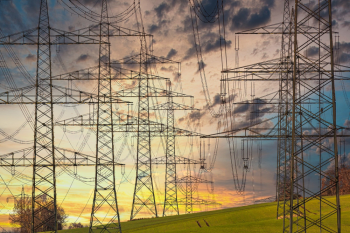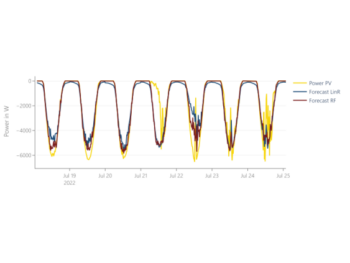Use Cases Intraday Arbitrage and Peak Shaving: Insights into the BCM Field Trial at the 6th E-Mobility Integration Symposium
In the research project “Bidirectional Charging Management – BDL”, a holistic, user-oriented offer for the integration of bidirectional electric vehicles into the energy system is being developed and tested. A comprehensive pilot operation with 50 regenerative BMW i3s has been running since mid-2021 to demonstrate the customer benefits and the value of the technology. As part of the “6th E-Mobility Integration Symposium” on October 10th, 2022 in The Hague, Theodor Haug and Veronika Engwerth gave two talks. They presented the results of the two use cases intraday arbitrage and peak load shaving, which were tested in the BDL field test.
The intraday use case aims to exploit energy price fluctuations and generates revenues through arbitrage trading. For this purpose, the vehicles of all customers in the use case were considered and marketed as one large battery storage system. On average, the electric vehicles here have a round-trip efficiency of 80%, which is comparable to other energy storage systems such as pumped storage power plants 1. During the field trial, both the efficiency and the fulfillment of the charging schedule could be significantly improved through adapted control and scheduling. In the field trial, bidirectional charging led to an additional energy load for the vehicle, which corresponds to an additional mileage of 15,000 km per year (at 20 kWh / 100 km). The revenues in the intraday use case depend heavily on the levies, surcharges, and grid fees on the charged electricity. Here, it is necessary to put them on an equal footing with other energy storage power plants to make the use case economically feasible.
Electricity prices for customers with an energy demand over 100,000 kWh per year consist of an energy price and a demand charge 2. In general, demand charges must be paid for the maximum quarter-hourly average power at the grid connection point within a calendar year. If it is possible to reduce the load at the grid connection point during periods of high-power demand, e.g. by discharging an energy storage system, the demand charges can be decreased. Within the framework of the BDL field trial, it was investigated whether a fleet of bidirectionally chargeable electric vehicles is suitable as energy storage in this application. It has been shown that peak loads can be capped by the vehicles. The success depends on the number of available electric vehicles, their state of charge and the course of the load profile.


